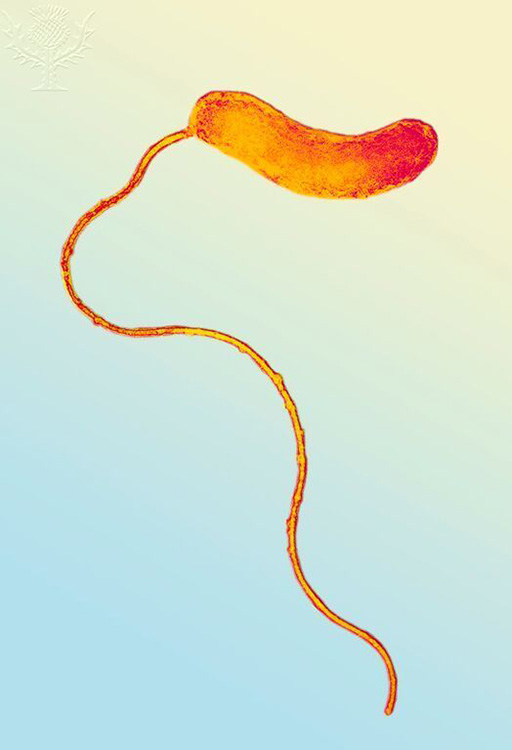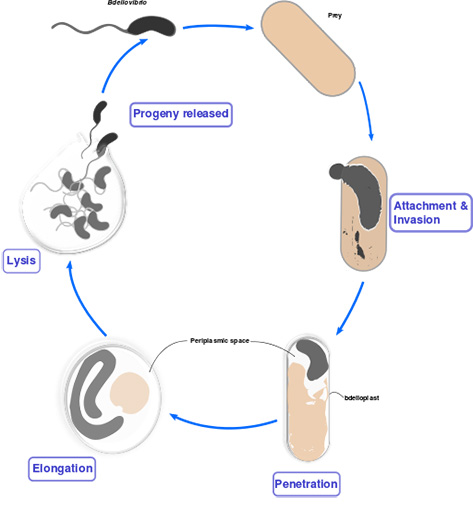3 Exploiting the natural defences of bacteria
In Weeks 3 and 4, you saw how antibiotic resistance naturally evolved to protect bacteria as they compete for limited resources in the wild. But antibiotics are just one weapon in bacteria’s defence arsenal. Some bacteria prey on other microbes, attacking and killing them. These predatory bacteria could be exploited to kill infectious pathogens as another alternative to antibiotics.
The best known type of predatory bacteria is
Bdellovibrio bacteriovorous attaches to the surface of its prey. Once attached, it penetrates the bacterial cell membrane and replicates. Finally, the prey bacterium is lysed, releasing new B. bacteriovorous particles into the environment (Figure 8).


